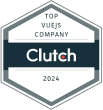As we move deeper into 2025, Poland is rapidly establishing itself as one of Europe’s most dynamic web development markets. Fuelled by robust digital infrastructure, a steadily growing pool of tech talent, and high demand from both local and international businesses, staying ahead of web development trends in Poland is now essential for success.
In this comprehensive overview, we explore 15 key trends shaping the Polish web ecosystem—including cutting‑edge technologies, industry practices, and strategic considerations for businesses. Whether you’re a startup in Warsaw, an SME in Kraków, or an international brand looking to collaborate with Polish developers, these insights will help you build smarter, faster, and more resilient web platforms.
1. AI & Machine Learning Powering Smarter Web Experiences
Polish developers are embracing AI/ML across web projects—from chatbots and recommendation systems to automated translations and adaptive layouts. Integration of tools such as GPT‑driven chat widgets or personalized content flows is rapidly becoming mainstream. This shift elevates user experience while reducing manual workload in content and support.
On the backend, Polish teams use Python (e.g. TensorFlow, PyTorch) to power analytics dashboards or predictive forms. Meanwhile, frontend teams increasingly embed intelligent widgets that adapt dynamically to user behavior. Integrating AI from the ground up is no longer optional—it’s a competitive differentiator.
2. Rise of Progressive Web Apps (PWAs)
Progressive Web Apps are revitalizing how Polish businesses engage customers. They deliver near-native mobile experiences—offline access, push notifications, and fast loading—without requiring users to install apps. Polish e‑commerce retailers report engagement boosts and improved conversion rates post‑PWA implementation.
For businesses exploring ecommerce website development, especially in mobile-first markets, PWAs offer excellent performance and reduced development cost compared to native applications.
3. Headless CMS & API‑First Architecture Take Hold
Poland’s web ecosystem is trending strongly toward decoupled architectures. Headless CMS platforms (like Strapi, Contentful, or Sanity) are being paired with modern frontend frameworks such as Next.js, React, SvelteKit, and Vue to deliver flexible, omnichannel experiences.
This API-first approach supports integrations with ERP, CRM, and ecommerce stacks—crucial for teams working on Shopify Agency Poland models or complex B2B storefronts. Content can flow seamlessly across web, mobile, kiosks, and custom UI layers.
4. Serverless & Edge Deployments for Speed & Scale
Polish teams are increasingly deploying serverless backends using AWS Lambda or Azure Functions, combined with CDN-mounted edge computing. This architecture reduces latency, lowers infrastructure costs, and improves global accessibility.
Jamstack-based static sites plus edge logic are commonly used for marketing pages and corporate platforms, delivering exceptional performance and scalability.
5. Voice Search & Conversational Interfaces
Voice search in Polish is gaining traction, especially for local queries and mobile user flows. Businesses are now optimizing content for long‑tail, conversational keywords in Polish, and incorporating voice-activated navigation on sites and PWAs.
Chat interfaces that understand Polish language nuances are also being employed to streamline customer support and reduce friction.
6. Augmented Reality (AR) & Immersive Ecommerce
AR features are increasingly popular with Polish retailers—from furniture and fashion to B2B equipment. Features like “view item in your space” and interactive 3D models help shoppers make decisions with confidence. VR showrooms for real estate or training platforms are also emerging.
If your project involves AR-enhanced shopping or immersive product visualization, there’s an opportunity to stand out by integrating these capabilities during ecommerce website development or Shopify storefront design.
7. Low‑Code/No‑Code Tools Accelerate Development
According to Gartner, over 70% of web projects in 2025 involve some low‑code or no‑code component. In Poland, tools like Webflow, Bubble, or internal drag‑and‑drop platforms enable rapid development by marketing teams, startups, and agencies alike.
These tools are particularly helpful for agencies positioning themselves as a modern web development agency in Poland, offering cost-effective and agile delivery of landing pages, simple portals, or prototypes.
8. Disappearing Frameworks & Minimal‑JS Frontends
Frameworks designed around minimal client-side JavaScript—such as Astro, Marko, and SvelteKit—are gaining traction. By delivering pre-rendered, fast-loading pages without excessive runtime code, these solutions help meet strict Core Web Vitals thresholds, especially for content-heavy sites.
Polish developers use these frameworks to build sites that are lightning-fast, SEO-friendly, and accessible across devices.
9. Dominant Programming Languages & Framework Preferences
In 2025, Python remains a dominant backend language in Poland, favored for AI, data processing, and content-heavy systems. On the front end, popular technologies include Node.js (often with NestJS), React/Next.js, Vue.js, and Svelte—enabling smooth headless implementations.
Go is also gaining popularity for microservices and edge deployments due to its performance and simplicity. Polish development teams offer expertise across this full-stack spectrum.
10. Cybersecurity & GDPR Compliance by Design
Data privacy and regulation remain fundamental in Poland. GDPR-compliant design is built into frameworks, consent flows, and data storage. Increasingly, Zero Trust principles, automated vulnerability scanning, and built-in encryption are required standards in new projects.
Security audits, pen-testing, and compliance reviews are now integral parts of any serious web development process in Poland.
11. Localization & Multilingual UX
Polish businesses often build sites in Polish and English (or more languages). Tools like next‑i18next and Vue‑I18n simplify localization for headless architectures. Bilingual design requires careful attention to layout, font support, and performance optimization across languages.
Polish agencies working on Shopify Agency Poland and web development agency Poland engagements commonly deliver fully localized storefronts with optimal speed and UX in both languages.
12. E‑Commerce & Shopify’s Role in Poland
E‑commerce continues to expand in Poland. Businesses are prioritizing high-speed, conversion-optimized online stores with integrated payment, shipping, and loyalty features. Shopify continues to dominate as a preferred platform, especially when paired with headless solutions for greater customization and speed.
As Polish consumers demand seamless mobile and desktop experiences, partnering with a Shopify Agency in Poland ensures access to localization, custom design, and performance optimizations tailored to local markets. Businesses are also exploring Shopify Plus for scalability and multichannel selling.
Conclusion: Preparing for the Future of Web Development in Poland
Whether you are a local business or a global enterprise looking to leverage Polish talent, staying ahead of these web development trends will shape your competitiveness. From AI and PWAs to headless CMS and serverless deployment, 2025 is about performance, scalability, and user-centric innovation.
To implement these trends effectively:
Explore web development services in Poland for tailored strategy.
Consult with a proven web development agency in Poland to modernize or migrate your platform.
Consider specialized ecommerce website development for growth.
Leverage a Shopify Agency in Poland to unlock your online store’s full potential.
Aleksandra Siwińska | Business Analyst



